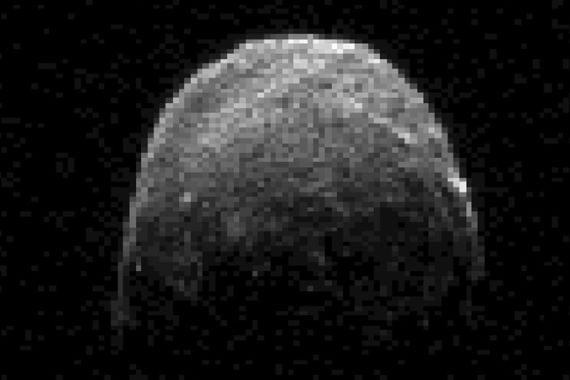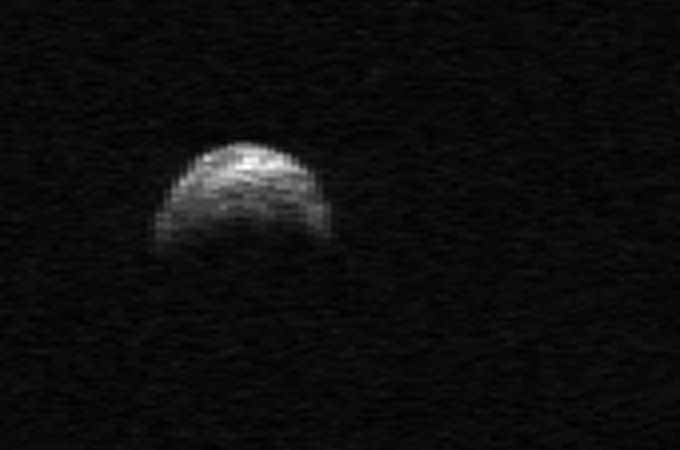Huge asteroid headed for close encounter
Scientists see no chance of impact with Earth or moon as the space rock sails about 323,469km from the planet.

 |
|
Asteroid 2005 YU55, pictured here by the Arecibo Radar Telescope, will pass closer to Earth than the moon [NASA] |
A huge asteroid is set to pass closer to Earth than the moon, giving scientists a rare chance for study without having to go through the time and expense of launching a probe.
Earth’s close encounter with Asteroid 2005 YU 55 will occur at 23:28 GMT on Tuesday as the space rock sails about 323,469 km from the planet.
Keep reading
list of 4 itemsCould shipping containers be the answer to Ghana’s housing crisis?
Thousands protest against over-tourism in Spain’s Canary Islands
Holding Up the Sky: Saving the Indigenous Yanomami tribe in Brazil’s Amazon
“It is the first time since 1976 that an object of this size has passed this closely to the Earth. It gives us a great – and rare – chance to study a near-Earth object like this,” said astronomer Scott Fisher, a programme director with the United States’ National Science Foundation, during a web chat with reporters.
The orbit and position of the asteroid, which is about 400 metres in diameter, is well known, added senior research scientist Don Yeomans, with NASA’s Jet Propulsion Laboratory in Pasadena, California.
Collision unlikely
“There is no chance that this object will collide with the Earth or moon,” Yeomans said.
Thousands of amateur and professional astronomers are expected to track YU 55’s approach, which will be visible from the planet’s northern hemisphere. It will be too dim to be seen with the naked eye, however, and it will be moving too fast for viewing by the Hubble Space Telescope.
“The best time to observe it would be in the early evening on November 8 from the East Coast of the United States,” Yeomans said. “It is going to be very faint, even at its closest approach. You will need a decent-sized telescope to be able to actually see the object as it flies by.”
Scientists suspect YU 55 has been visiting Earth for thousands of years, but because gravitational tugs from the planets occasionally tweak its path, they cannot tell for sure how long the asteroid has been in its present orbit.
“These sorts of events have been happening for most of the lifetime of the Earth, about 4.5 billion years,” Fisher said.
Computer models showing the asteroid’s path for the next 100 years show there is no chance it will hit Earth during that time, added Yeomans.
“We do not think that it will ever impact the Earth or moon (but) we only have its orbit calculated for the next 100 years,” he said.
Previous studies show the asteroid, which is blacker than charcoal, is what is called a C-type asteroid that is likely made of carbon-based materials and some silicate rock.
More information about its composition and structure are expected from radar images and chemical studies of its light as the asteroid passes by the planet.
“I’ve read that we will be able to see details down to a size of about 15 feet (4.5 metres) across on the surface of the asteroid,” Fisher said.
NASA is working on a mission to return soil samples from an asteroid known as 1999 RQ36 in 2020, followed by a human mission to another asteroid in the mid-2020s.